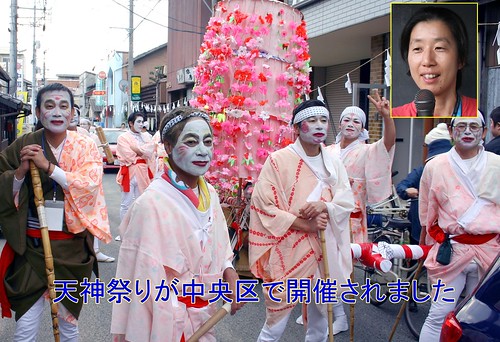Thursday, August 01, 2013
Japanese Wide Show Mock-up
A mock-up of a Japanese Wide Show (current affairs and entertainment program) emphasising the features that demonstrate Nacalian theory of Japanese culture: that Japanese culture is predominantly visual or imago-centric.
1) The faces of the commentators are seen displayed during the parts of the current affairs program that are filmed on location, so that viewers can SEE the expressions, and see the feelings that are being felt. (c.f. the face, in the top right hand corner)
2) The Japanese is given subtitles so that the viewers can *see* what is being said.
On the other hand, in the West, the viewers are provided with copious amounts of canned laughter so that so that they can know when to laugh. The principle is the same - the folks at home need to be told when to laugh - but while Japanese are stimulated by visual images, Westerners are comparatively "(logo) phonocentric" (Derrida, 1998).
In some Western News shows there are also teletypes providing extra linguistic information rather than a subtitles to what the presenters are saying. The majority of Westerners do not need to see what is being spoken, but they do like to feast upon as much linguistic information as possible.
Derrida, J. (1998). Of grammatology. JHU Press.
1) The faces of the commentators are seen displayed during the parts of the current affairs program that are filmed on location, so that viewers can SEE the expressions, and see the feelings that are being felt. (c.f. the face, in the top right hand corner)
2) The Japanese is given subtitles so that the viewers can *see* what is being said.
On the other hand, in the West, the viewers are provided with copious amounts of canned laughter so that so that they can know when to laugh. The principle is the same - the folks at home need to be told when to laugh - but while Japanese are stimulated by visual images, Westerners are comparatively "(logo) phonocentric" (Derrida, 1998).
In some Western News shows there are also teletypes providing extra linguistic information rather than a subtitles to what the presenters are saying. The majority of Westerners do not need to see what is being spoken, but they do like to feast upon as much linguistic information as possible.
Derrida, J. (1998). Of grammatology. JHU Press.
Labels: japan, japanese culture, Jaques Lacan, Nacalian, nihonbunka, occularcentrism, theory, 日本文化
This blog represents the opinions of the author, Timothy Takemoto, and not the opinions of his employer.

